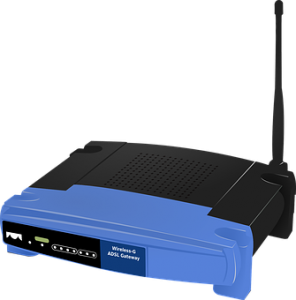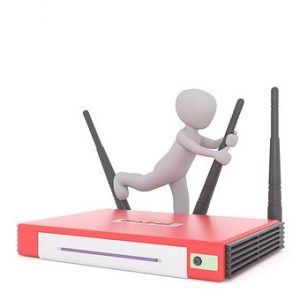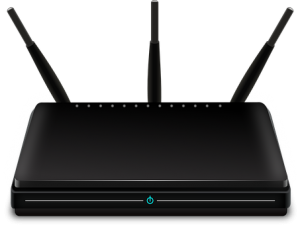Dlink Router Login Issue
D Link is a prominent global networking company that manufactures various products, including routers. These routers facilitate data communication among different digital devices over a local area network (LAN) or a vast area network (WAN). D Link routers are utilized in homes and businesses, delivering reliable high-speed internet connectivity, advanced security features, and effective network management capabilities.
This blog post is made to provide the essential details for the D Link router login and troubleshooting D link Router login issues.
Logging in to your D Link router is a critical step to take control over various aspects of your network. Here’s why the D Link router login is essential:
- Network Configuration: You can change the router’s settings according to your needs through the login interface. It includes adjusting the security settings, modifying the network name (SSID), changing the channel of your WiFi network, and more.
- Security Management: You can set up and manage the security features offered by D Link, such as firewall settings, Virtual Private Network (VPN) settings, and parental controls. This ensures that your network is secure from potential threats and allows you to control what content is accessible.
- Troubleshooting: If you meet any problems with your network, logging in to your D Link router gives you access to diagnostic tools that can help identify and fix these problems.
- Firmware Updates: Manufacturers frequently update the firmware to improve device performance or add new features. You can check for and install these updates by logging in to keep your D Link router running optimally.
- Device Management: The D Link router interface provides information about the devices connected to your network. You can monitor these devices, limit bandwidth usage, or block devices as needed.
it’s important to understand how to log in and manage these settings to maintain the functionality, performance, and security of your D Link router and the broader network,
Dlink Router login Process:
 Performing a D Link router login is an effortless process that involves a few simple steps. It’s important to note that you will need the default D Link admin password to complete the D Link router login.
Performing a D Link router login is an effortless process that involves a few simple steps. It’s important to note that you will need the default D Link admin password to complete the D Link router login.
- On a device linked to the internet connection of your D Link router, launch an internet browser.
- Type the D Link router’s IP address in the browser’s address bar. Typically, this is 192.168.0.1 or 192.168.1.1. Press Enter.
- Now you will see the Dlink router login page. Now enter your Dlink administrator login details.
- Enter the default D Link admin password. If you’ve not changed the password previously, it will be the default D Link password. The default D Link router password is usually “admin” or blank.
- After entering the D Link default password, press ‘Login.’ You should now have access to your D Link router’s settings.
Applying these general guidelines allows you to access your router’s settings and manage your network efficiently. Moreover, changing the default D Link router default password after your first login is essential to enhance your network’s security. Ensure your new D Link router password is strong and unique to prevent unauthorized access to your network. Remember, the Dlink administrator login and associated password are critical for your network’s security and personal privacy.
Common DLink Router Login Issues:
D Link routers, while highly reliable, can sometimes experience common network or technical issues that affect their performance and accessibility. It’s essential to know how to tackle these challenges.
- Lost Default D Link Admin Password: One of the most frequent issues is forgetting the default D Link admin password or the D Link default password. Remembering your credentials to ensure seamless Dlink router login and maintain secure access is important.

- Failure to Access D Link Login Page: Sometimes, users may encounter difficulty accessing the D Link login or D Link log in page. This might be due to incorrect IP address entries or issues with the web browser.
- WiFi Connectivity Problems: Users often experience WiFi connection issues, causing difficulty in connecting devices to the D Link router. These problems could arise due to incorrect Dlink router login settings or conflicts in the network configuration.
- Difficulty in Updating Firmware: Firmware updates require you to log in to the D Link router interface using your Dlink administrator login credentials. Some users encounter problems during this process, possibly due to an unstable internet connection or an incorrect D Link router default password.
- Poor Network Performance: Occasionally, users might experience slow or interrupted network performance. This could be due to issues with the Dlink router login settings, network congestion, or other technical glitches.
You can promptly address these issues and maintain a robust and efficient network environment by correctly utilizing your Dlink administrator login credentials. Remember, your D Link default password or D Link router password is vital to accessing, managing, and securing your network.
How to Fix DLink router login issues:
In the above segment, we have discussed the common Dlink login issues; now we will explain how to fix these common D link router login problems: –
- Restoring the Default D Link Admin Password: If you’ve misplaced your D Link default password or D Link router password, resetting your router to factory settings is the most effective solution. Push and seize the reset button on the router’s back for about 10 seconds before releasing it. Once the router restarts, you can utilize the default D Link admin password to perform the Dlink router login.
- Ensuring Access to the D Link Login Page: If you’re experiencing difficulties accessing the D Link login page, enter the correct IP address in your browser. Clearing your browser’s cache or trying a different browser can also help.
- Rectifying WiFi Connectivity Problems: Double-check your Dlink router login settings if you encounter issues connecting devices to your router. You may need to adjust your wireless settings through the Dlink administrator login page or change your WiFi channel to avoid interference.
- Updating firmware Successfully: Firmware updates require Dlink administrator login. If you’re experiencing problems, check your internet connection for stability. Verify that you’re using the correct D Link router default password to ensure a successful login.
- Performing Factory Reset: In case of persistent technical problems or a forgotten D Link router password, a factory reset can help. After resetting, you can use the D Link router default password to log in and reconfigure your settings.
- Improving Network Performance: If your network performance suffers, log in to your D Link router using the D Link default password and inspect your settings. You may need to adjust the bandwidth settings, change the transmission channel, or update the firmware to improve your network’s efficiency.
How to Prevent DLink Router Login Issues:
 Preventing D Link router login issues is as important as knowing how to resolve them. Taking proactive measures can save you from troubles and maintain a smooth network experience. Here are some preventative steps:
Preventing D Link router login issues is as important as knowing how to resolve them. Taking proactive measures can save you from troubles and maintain a smooth network experience. Here are some preventative steps:
- Maintain Record of D Link Router Password: Remembering your D Link router password or D Link default password is crucial for accessing your router settings. Keep a secure D Link router password record to prevent loss or forgetting.
- Regular Dlink Router Login Checks: Regularly log in to your D Link router using the D Link login or D Link log in details. This helps to ensure that the Dlink administrator login process is working smoothly and can help identify any login issues early on.
- Browser Maintenance: Keep your web browser updated to the latest version to ensure compatibility with the Dlink router login page. Clearing the cache and cookies periodically can prevent issues accessing the D Link login page.
- Frequent Firmware Updates: Regularly check for firmware updates via the Dlink administrator login page. Keeping your router’s firmware up to date can prevent connectivity and performance issues.
- Network Monitoring: Regular network monitoring can help identify any potential problems early on. Watch the devices connected to your network and their bandwidth usage through the Dlink router login interface.
- Security Measures: Maintain robust security measures by regularly updating your D Link router password and enabling features like firewall and VPN via the Dlink administrator login interface. This prevents unauthorized access and protects your network.
By adhering to these preventive steps, you can enjoy a more seamless and secure experience with your D Link router and help avoid login issues.
Conclusion:
Maintaining your D Link router’s optimal performance requires regular attention to several critical aspects, including D Link login, Dlink administrator login, and the appropriate usage of the D Link default password. By keeping track of your D Link router password and regularly checking for firmware updates, you can ensure a smooth and secure networking experience.
Moreover, consistently checking the Dlink router login process can help in the early detection of any potential issues. Regular browser maintenance and diligent monitoring of your network’s health are also integral to this routine.
The importance of strong security measures, including regular updates to your D Link router password, cannot be overstated. Following the best practices and preventive measures outlined here, you can efficiently manage and safeguard your network, reducing the likelihood of encountering troublesome D Link router login issues.
Remember, the foundation of effective network management lies in understanding your router’s functionalities and the importance of routine maintenance. As a responsible network administrator, your proactive approach to these tasks will ensure a reliable and secure environment for all users of your D Link router. To know more about D link Router setup & fixing issues, refer to the D Link router Support article.

